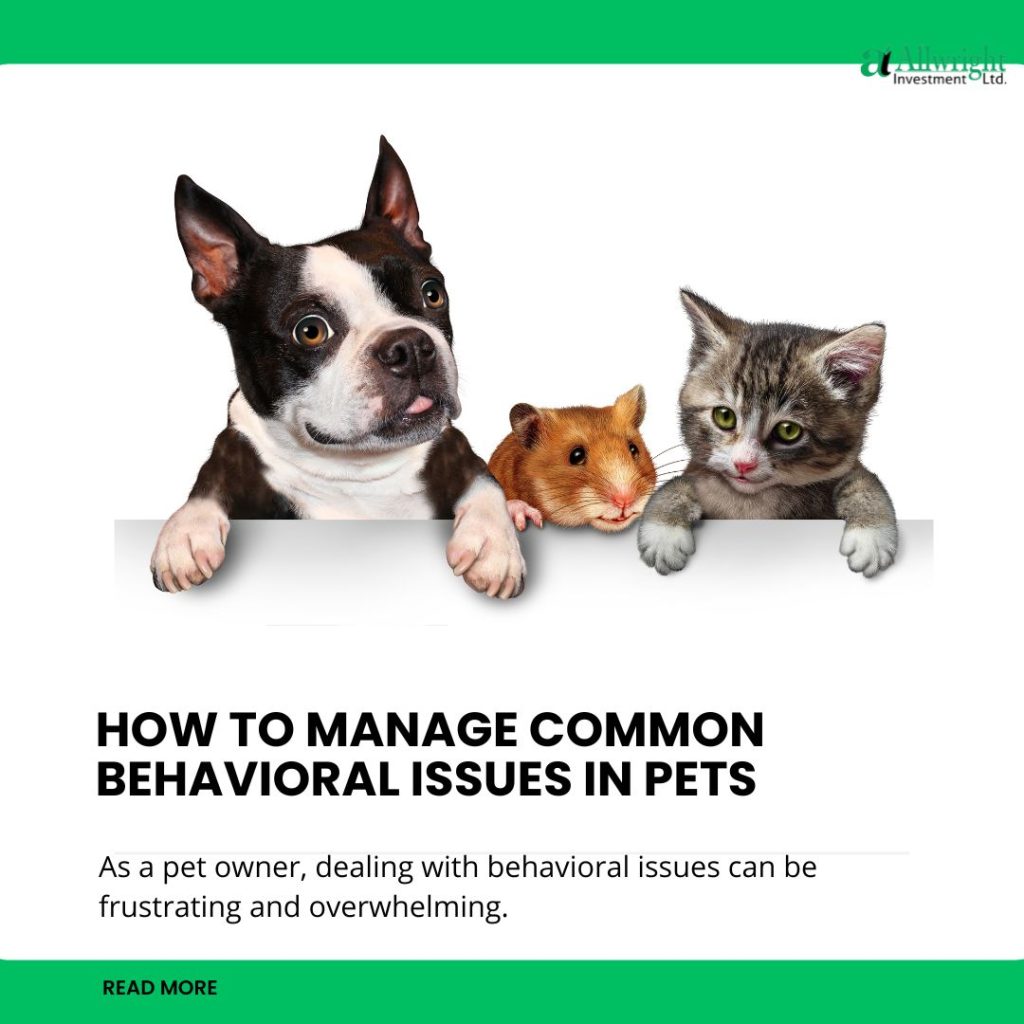How to Manage Common Behavioral Issues in Pets

As a pet owner, dealing with behavioural issues can be frustrating and overwhelming. Behavioral issues can range from destructive chewing to excessive barking, aggression, and even anxiety. Addressing these problems early on with the right solutions can significantly improve your pet’s well-being.
Let's look at common pet behavioral issues and provide actionable tips on how to manage them effectively.
1. Excessive Barking or Meowing
Excessive barking in dogs and meowing in cats can be a sign of anxiety, boredom, or lack of stimulation. It can also be a response to environmental changes or frustration.
Solution:
- Determine the cause: Identify triggers such as unfamiliar sounds, separation anxiety, or a need for attention.
- Exercise and stimulation: Ensure your pets are getting enough physical and mental stimulation through regular exercise and interactive toys.
- Training and commands: Positive reinforcement training can teach pets when it’s appropriate to be vocal and when to stay quiet.
Consult a professional trainer or a veterinarian if the behavior persists, as it may be linked to deeper behavioral issues or health concerns.
2. Destructive Chewing or Scratching
Destructive behaviors such as chewing in dogs or scratching in cats can result from boredom, anxiety, or teething in puppies. This can lead to expensive damage around the house.
Solution:
- Provide alternatives: Offer chew toys for dogs and scratching posts for cats to satisfy their natural urges.
- Crate training for dogs: Using crates during times when you cannot supervise your dog helps reduce destructive tendencies.
- Pet-safe deterrents: Spraying furniture or items with pet-safe deterrents can help discourage chewing or scratching.
Ensure that your pet is getting enough exercise and interaction to reduce stress-related chewing or scratching.
3. Separation Anxiety
Separation anxiety is common in pets that are overly attached to their owners. It can manifest as whining, destructive behavior, or soiling the house when left alone.
Solution:
- Gradual departure training: Gradually increase the amount of time you leave your pet alone to help them adjust to your absence.
- Create a comforting environment: Leave your pet with familiar objects like blankets, or try leaving the TV or radio on for background noise.
- Veterinary intervention: In severe cases, consult your vet about calming supplements, medications, or specialized behavior therapy.
Enrichment activities, such as puzzle toys or treat-dispensing toys, can help keep pets occupied while you’re away.
4. Aggression Towards People or Other Pets
Aggression can occur due to fear, territorial behavior, or past trauma. This behavior can be unpredictable and requires immediate attention to ensure the safety of everyone involved.
Solution:
- Early socialization: Expose your pets to different environments, people, and animals from a young age to reduce fear-based aggression.
- Consult a professional: Aggression can be a complex issue requiring the help of a veterinary behaviorist or a certified animal trainer.
- Medical evaluation: Sometimes, aggression is linked to underlying health issues such as pain or hormonal imbalances. A veterinary check-up can help rule out medical causes.
Never punish an aggressive pet, as this can escalate the behavior. Instead, focus on positive reinforcement and professional guidance.
5. Inappropriate Elimination
Inappropriate elimination, such as urinating or defecating in the house, is a common issue that can stem from medical problems, anxiety, or improper training.
Solution:
- Rule out medical issues: Always consult your vet first to rule out conditions like urinary tract infections or digestive problems.
- Proper house-training: For dogs, consistent house-training with a schedule of outdoor bathroom breaks is key. For cats, ensure their litter box is clean and in a quiet, accessible area.
- Reduce stressors: Changes in the home environment, such as new pets or moving, can cause stress-related elimination. Provide a calm, stable environment.
Reward-based training is essential for teaching your pets where it’s appropriate to relieve themselves.
6. Pet Anxiety and Stress
Pets may become anxious due to changes in their environment, loud noises, or unfamiliar situations.
Solution:
- Calming aids: Items like calming collars, sprays, and supplements can help ease anxiety.
- Desensitization: Gradually exposing pets to their stressors in a controlled way can reduce their anxious responses over time.
- Veterinary advice: In cases of severe anxiety, your vet can recommend anti-anxiety medications or behavior modification techniques.
Pro Tip: Providing your pet with a safe, quiet space during stressful events, like fireworks or thunderstorms, can help reduce their anxiety.
When to Consult a Veterinarian
While some behavioral issues can be managed at home, it’s important to recognize when professional help is needed. At Allwright Investment Ltd., we offer veterinary consultations to help diagnose and address any underlying medical or psychological causes of your pet’s behavioral issues.
Conclusion
Dealing with common pet behavioral issues can be challenging, but with the right approach and professional guidance, you can help your pet lead a happier, more balanced life. At Allwright Investment Ltd., our team of experts is dedicated to providing veterinary services, animal health solutions, and farm services to support the well-being of all animals. Whether you’re dealing with a stubborn chewer, a nervous pet, or any other behavioral concern, we are here to assist with the right advice and treatments.
Invest in Allwright Investments Limited today!



